The Hidden Eye

Brief Synopsis
Cast & Crew
Richard Whorf
Edward Arnold
Frances Rafferty
Ray Collins
Paul Langton
Wm. "bill" Phillips
Photos & Videos
Film Details
Technical Specs

Synopsis
Barry Gifford is eager to marry Jean Hampton, the niece of wealthy tin mine owner Arthur Hampton, but Arthur, who feels that it is inappropriate for them marry so soon after two mysterious murders in the family, refuses to give his consent. In the hope of persuading Arthur's brother Rodney to give his consent to the marriage, Jean and Barry arrange a meeting with him at his apartment. When Jean and Barry arrive at Rodney's, however, they find Phillip Treadway, Arthur's lawyer, standing over Rodney's murdered body. On the floor, by the body, Barry finds a perfumed note with a cryptic statement alluding to treachery in Sumatra. A short time later, Inspector Delaney adds Rodney's murder to his investigation of the two previous family murders. He begins to suspect Barry, who may have may have killed Rodney to avenge his father's financial losses while he was Arthur's business partner in Sumatra. Jean believes that Barry is innocent, and, therefore, decides to seek the help of Capt. Duncan Maclain, a blind detective friend of hers. Aided by his seeing-eye dog "Friday," Duncan begins an investigation, using the killer's perfumed note as his only clue. While Duncan tries to determine the ingredients of the perfume on the letter, Arthur becomes the killer's next victim. After determining the brand of perfume on the letter, Duncan and his bodyguard, Marty Corbett, come to suspect Treadway. Realizing that the perfume is insufficient evidence with which to charge Treadway, Duncan decides to deliberately let the lawyer know that he is a suspect in the hopes that Treadway will accidentally incriminate himself. A short time later, Treadway abducts Friday and lures Duncan and Marty to his hideout, where he imprisons the two men. After admitting to Duncan and Marty that he killed members of the Hampton family to get at Arthur's money, Treadway leaves the hideout to kill Barry and frame him for the murders. Duncan and Marty overpower their abductors and, after escaping from the hideout, race to the Hampton estate to foil Treadway's scheme. With Friday's help, Duncan and Marty prevent Barry's murder and succeed in exposing the killers. With the case solved, Jean and Barry resume their romance and ask Duncan to be the best man at their wedding.

Director

Richard Whorf
Cast

Edward Arnold

Frances Rafferty
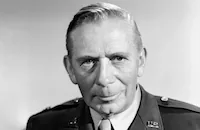
Ray Collins

Paul Langton
Wm. "bill" Phillips
Thomas Jackson
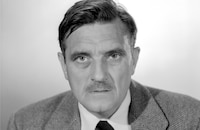
Morris Ankrum
Robert Lewis
Francis Pierlot
Sondra Rodgers
Theodore Newton
Jack Lambert
Ray Largay
Leigh Whipper

Byron Foulger

Lee Phelps
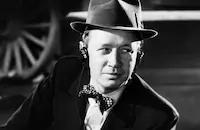
Eddie Acuff
Bob Pepper

Clyde Fillmore
Friday
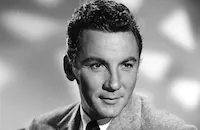
Cameron Mitchell
Guy Bates Post
Jane Green
Marjorie Davies

Audrey Totter
Jay Wilson
Will Walls
Robert Hartzell
Dan De Pew
Jack Carrington
Dick Thorne
Frank Marlowe
Frank Austin
Mariska Aldrich
Del Henderson
Rhea Mitchell
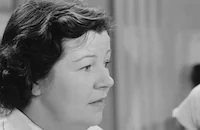
Margaret Bert
Nolan Leary
Cy Malis
Danna Mcgraw
Crew
Preston Ames
Edward Baravalle
Kay Carter
George Harmon Coxe
George Harmon Coxe
Howard Culver
Cedric Gibbons
Jack Greenwood
George Hively
Paul Huldschinsky
Irene
Walter Lackey
M. J. Mclaughlin
Arthur Rose
Harry Ruskin
Douglas Shearer
Robert Sisk
David Snell
Newell Sparks
William Steinkamp
Michael Steinore
Lester White
John A. Williams
Edwin B. Willis

Film Details
Technical Specs

Articles
Hidden Eye -
By Richard Harland Smith

Hidden Eye -
Quotes
Trivia
Notes
The working title for this film was The Last Express. While onscreen credits note the film was based "on the characters created by Baynard Kendrick," contemporary sources indicate that the story was taken from Kenrick's best-selling novel The Last Express. A 1942 M-G-M film Eyes in the Night also starred Edward Arnold as the blind detective "Duncan Maclain" and featured Friday, the dog. Although the CBCS and Hollywood Reporter news items in late January 1945 indicate that actor Russell Hicks had been cast for the part of "Rodney Hampton," the role was actually played by Clyde Fillmore. A December 1944 Hollywood Reporter news item listed actor William Norton Bailey in the cast, but his appearance in the released film has not been confirmed. Other pre-production news items in Hollywood Reporter indicate that production on the film, which was to have begun on November 27, 1944, was postponed due to an illness suffered by director Richard Whorf.















